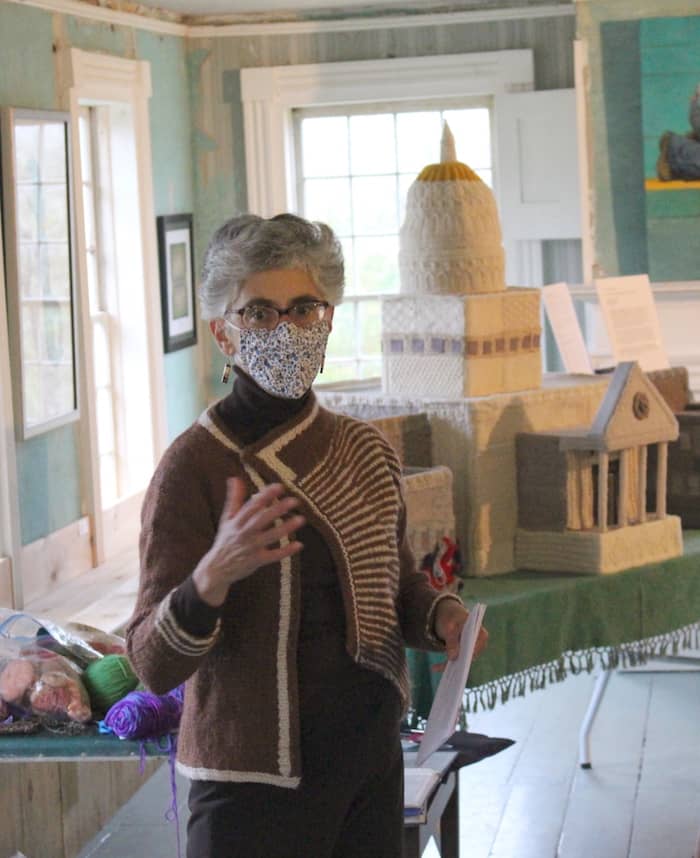After holding half a dozen Zoom-based knitting circles, I held an in-person Knit Democracy Together circle on Saturday. The setting was the historic 19th century Kent Tavern in rural Calais, Vermont. The state-owned building is open one month a year for a wonderful art exhibition.
It was a chilly day, and there’s no heat in the building, so knitting circle participants gathering in the old ballroom wore sweaters and shawls. The photo above shows me in a stylish Norah Gaughan designed sweater with the Vermont sculpture behind me.
During the circle we talked about the structures that impact whether voters’ voices are heard. The distorting impact of gerrymandering generated lots of discussion. It’s just one example of the ways our governing institutions do not reflect majority preferences.
New York Times columnist Jamelle Bouie wrote about several ways that the constitution fails to ensure majority rule in America. His Saturday column explains James Madison’s belief that the only viable principle for self-governance is majority rule. Madison worried that a constitutional government might deviate significantly from majority rule. When that happens, he said, the majority must reform the constitution or change the government.
So what reforms do we need? The 2020 American Academy of Arts & Sciences report Our Common Purpose has concrete proposals for restoring representative democracy. The recommendations achieving equal representation include:
- substantially enlarging the U.S. House of Representatives
- introducing ranked-choice voting in elections
- replacing the 1967 law that mandates single-member districts for the House of Representatives
- adopt state and federal legislation that creates consistent procedures for drawing fair congressional districts
- reforming campaign finance laws
- setting 18-year term limits for Supreme Court justices
The report has clear explanations of the rationale for each recommendation.
Let’s keep talking about the electoral process and how we can safeguard democracy.


